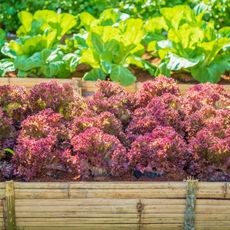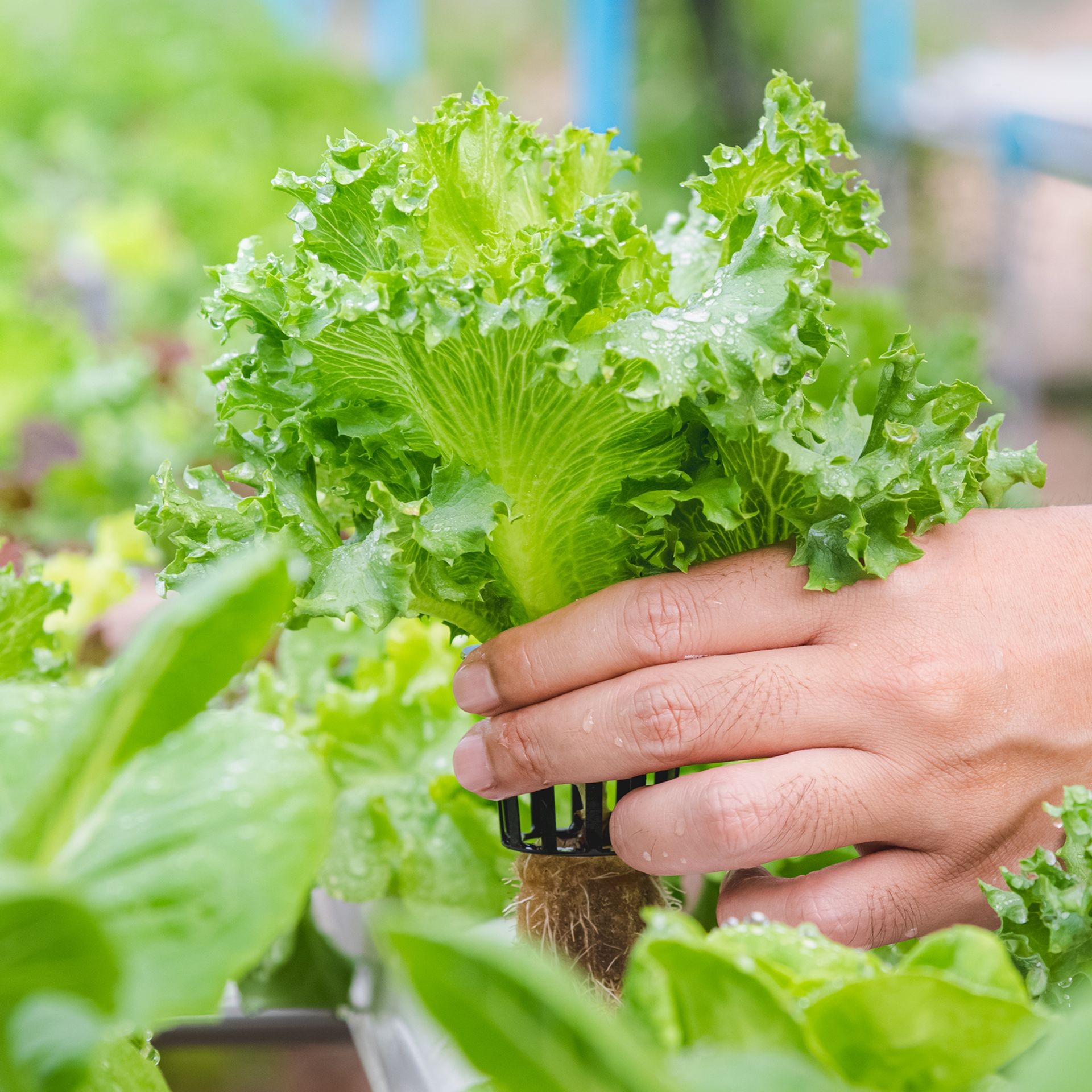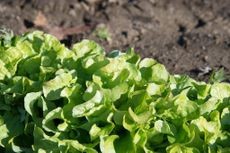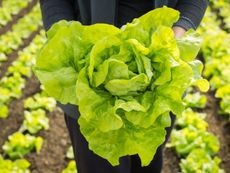No products in the cart.
NEWS
Mastering Lettuce Cultivation: Your Biogarden Guide to Success
Growing crisp, fresh lettuce is a rewarding endeavor for any home gardener. It’s a staple in salads and sandwiches, relatively quick to mature, and offers a wide array of textures and flavors. While often considered an easy crop, achieving consistently healthy and abundant yields can sometimes present challenges. Pests, diseases, and environmental factors can all impact your lettuce patch. As an experienced agriculturist and content creator for Biogarden.asia, I’ve encountered these issues firsthand and understand the importance of proper care and timely intervention. This guide provides essential knowledge to help you navigate the common hurdles and enjoy a bountiful lettuce harvest.
Exploring the Diverse World of Lettuce Varieties
The world of lettuce is far more exciting than the standard supermarket head. Different varieties offer unique characteristics in terms of taste, texture, color, and growing requirements. Understanding these differences helps you choose the best types for your climate and culinary preferences. You can find everything from loose leaf types, like the beautiful Purple Leafy Greens or vibrant Red Leaf Lettuce varieties that add color and crunch to salads, to heading types like the classic Iceberg or the reliably crisp Romaine (including specific types like Valmaine). For those in warmer climates, heat-tolerant options like Ballade lettuce exist, while others like the cold-hardy Reine des Glaces (Ice Queen) are perfect for cooler seasons. Don’t forget unique textures like the frilly Frisée! Exploring these options allows you to diversify your garden and your plate.
 Red leaf lettuce growing in a raised garden bed
Red leaf lettuce growing in a raised garden bed
Getting Started: Essential Growing Conditions
Most lettuce varieties thrive in cooler temperatures, typically between 45°F and 65°F (7°C-18°C). They prefer consistently moist, well-drained soil rich in organic matter. While lettuce needs sunlight, too much intense heat and sun can cause it to bolt (go to seed) and become bitter. Partial shade, especially during the hottest part of the day or in warmer climates, can be beneficial. Starting seeds indoors allows for an earlier harvest, but many varieties can be directly sown into the garden bed. Proper spacing is crucial to ensure good air circulation and prevent disease.
Beyond the Soil: Hydroponic Lettuce Explained
For those with limited space or a desire for year-round production, learning how to grow lettuce in water using hydroponic systems offers a fantastic alternative. This soil-free method allows you to grow lettuce indoors on countertops or windowsills, providing fresh greens regardless of the season or outdoor conditions. It’s a clean and efficient way to cultivate certain lettuce types, offering rapid growth in a controlled environment.
 Hydroponic lettuce growing in a tray indoors
Hydroponic lettuce growing in a tray indoors
Protecting Your Crop: Dealing with Pests and Diseases
Like most crops, lettuce is susceptible to various pests and diseases. Recognizing the signs early is key to protecting your harvest.
Common Diseases Affecting Lettuce
- Damping Off: A frustrating issue where seemingly healthy seedlings suddenly collapse and die, often at the soil line. This is caused by fungal pathogens in the soil, particularly in overly wet conditions. Proper seed starting mix and avoiding overwatering are crucial preventative measures.
- Soft Rot: A troublesome bacterial disease that causes lettuce heads to become slimy and rot. It’s difficult to control once established, and unfortunately, infected plants usually cannot be saved. Good sanitation and avoiding planting in previously infected soil are important.
- Lettuce Mosaic Virus (LMV): This viral disease can stunt growth, cause mottling or yellowing on leaves, and significantly reduce yield. It’s often spread by aphids and through infected seeds. Using certified disease-free seed and controlling aphid populations are key strategies.
Pest Challenges
Aphids are common sap-sucking pests that can weaken plants and spread viruses like LMV. Nematodes on lettuce can also cause serious damage to the roots, leading to stunted growth or even crop failure depending on the type of nematode. Identifying pests and implementing appropriate control measures (like beneficial insects or organic sprays) is vital.
Physiological Disorders
Tipburn in lettuce is a non-infectious disorder where the edges of the leaves, particularly on inner leaves of heading varieties, turn brown and die. This is often linked to inconsistent watering or a calcium deficiency, especially during rapid growth phases or when humidity is low. Maintaining consistent soil moisture is the primary way to manage tipburn.
 Close-up of lettuce leaf edge showing signs of tipburn
Close-up of lettuce leaf edge showing signs of tipburn
Optimizing Growth and Harvest
Beyond basic care, several techniques can enhance your lettuce growing success.
Companion Planting
Companion plants for lettuce can help deter pests, improve soil health, or simply make better use of garden space. Understanding which plants are good neighbors (like carrots, radishes, or onions) and which should be avoided can contribute to a healthier lettuce crop.
Knowing When and How to Harvest
Picking lettuce heads or harvesting loose leaves at the right time ensures the best flavor and texture. Head lettuce is typically harvested when the head is firm and full. Leaf lettuce can be harvested using the “cut-and-come-again” method, where outer leaves are removed, allowing the plant to continue producing. Learning the proper technique prevents damaging the plant and extends the harvest period.
 Freshly harvested head of lettuce with soil clinging to the roots
Freshly harvested head of lettuce with soil clinging to the roots
Managing Environmental Stress
Lettuce generally prefers cool conditions, but it’s important to consider lettuce and frost. While some varieties can tolerate light frost, protection may be needed for hard freezes. Conversely, heat can be a major stressor, leading to bolting and bitterness. Selecting heat-tolerant varieties and providing afternoon shade can help.
Reviving Wilted Lettuce
Even after careful harvesting, lettuce can sometimes wilt. Simple techniques can often revive wilted lettuce and restore its crispness, ensuring your homegrown greens are perfect for your meals.
Conclusion
Growing lettuce is a rewarding journey that offers a wide variety of options for your garden and kitchen. While challenges like pests, diseases, and environmental stresses can arise, armed with knowledge about different varieties, essential care practices, and timely problem-solving, you can cultivate thriving lettuce plants. By understanding the needs of this versatile crop and employing sound gardening techniques, you can enjoy a continuous supply of fresh, healthy greens right from your own space. Explore the possibilities and bring the joy of homegrown lettuce to your table. At Biogarden.asia, we are passionate about supporting your gardening success with expert insights and quality products.



